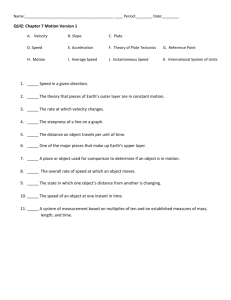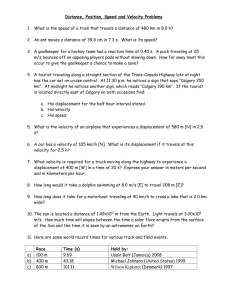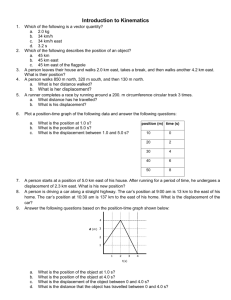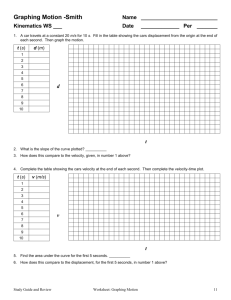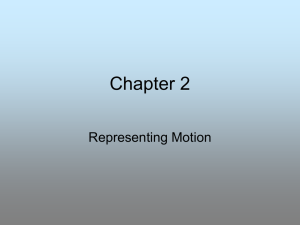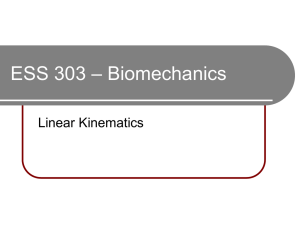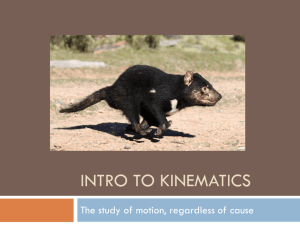Describing Motion
advertisement
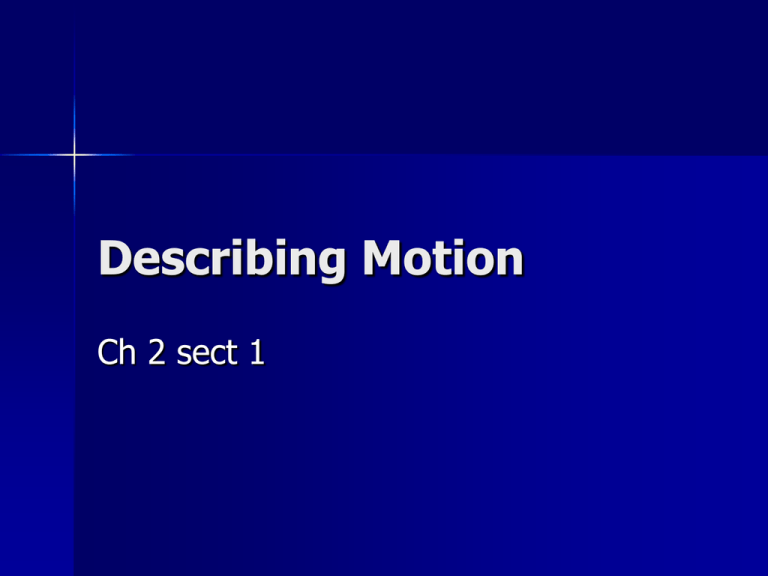
Describing Motion Ch 2 sect 1 Challenge Can you describe motion without using the word move? Motion Motion occurs when an object changes its position When something goes from one spot to another then motion has occurred If you are sitting completely still with no movement, are you in motion? Relative Motion The correct answer is yes and no because of relative motion Relative motion depends on what we are comparing motion to – Sitting completely still you are not in motion compared to the room you are in – Even if you are sitting completely still you are in motion compared to the sun b/c you are on the earth and the earth is moving around the sun Relative Motion, Physics, and Earth Science Science has shown that the surface of the earth is broken into a bunch of different sections – These sections are called plate tectonics Plate tectonics are in constant motion, therefore you are always in motion relative to other continents. What evidence supports plate tectonics Describing Motion • There are two words which we will begin describing motion with. 1. Distance - Distance refers to how far something has moved • Distance must have a unit and a number attached to it Describing Motion (continued) 2. Displacement - Displacement describes how far as well as which direction the object is from its starting point Rate and Speed Rate-Change over time Ex.-rate of growth may be 2 cm’s per year Speed-Distance traveled in a given amount of time Speed is measured in meters/sec To calculate speed we use the equation Speed = Distance or S = D Time T Types of Speed There are two different types of speed Instantaneous Speed-Speed at any given point and time 1. Ex.-Looking at the speedometer in your car, it tells how fast you are traveling now Types of Speed (cont) 2. Average Speed-Distance covered over a set time period. Takes into account the changes in speed This is where we use our equation for speed Speed = Distance Time Graphing Motion There are two basic graphs that can be used when showing motion 1. 2. Distance-time graph: A distance-time graph shows how far an object has traveled as well as how long it took Displacement-time graph: A displacement time graph shows how far an object is away from its starting point Graphing Motion (continued) When graphing motion Time is always on the x axis Distance or Displacement are always on the Y axis You can never have a vertical line • Why??? It is possible to have a horizontal line • Why?? Velocity Velocity describes the speed and direction of an object If you have escalators that are next to each other and running the exact same speed, do they have the same velocity? • Yes or No and why- If you have have a car that is traveling at 20 meters per second (constantly) in a circle does that car have the same velocity? • Yes or No and why-


